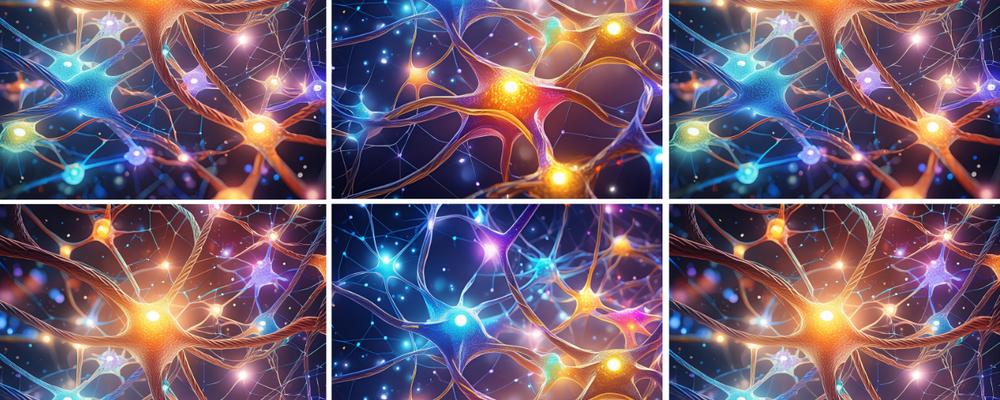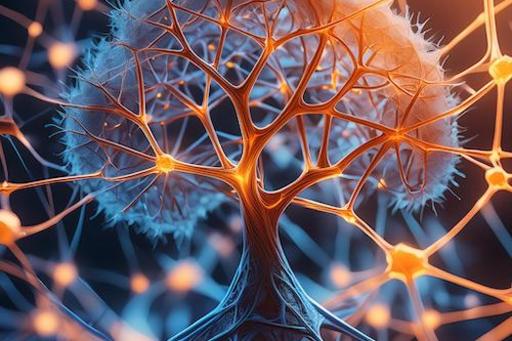
The neurophysiology of ESSENCE
An overview of the research programme neurophysiology of ESSENCE, including past and ongoing research projects.
Overview of the research programme
The different neurodevelopmental conditions that constitute ESSENCE affect brain functioning, and our research program uses different tools with the aim of objectively measuring the differences that may be present between ESSENCE individuals and typically developing ones.

There are many ways to look at brain structure and function, and they include anatomical magnetic resonance imaging (MRI), functional MRI, magneto-encephalography (MEG), electro-encephalography (EEG/ERP), as well as eye tracking, which gives information both on behaviour (gaze) and on the level of arousal (pupillometry) and that can be associated with other measures of arousal as well (heart rate, skin conductance), and psychophysical tests that are reflecting the balance between Excitation and Inhibition (E/I) in the brain (e.g. paradoxical motion perception test). We also have developed a new tablet-based test to evaluate fine motor functions. All these tests are complemented by questionnaires that indicate, for example, the level of sensitivity to sensory stimuli, or more generally psychological traits that have been related to an autism or other ESSENCE diagnosis.
We are also interested in a leading hypothesis in the field of autism – one that may also be relevant to other conditions – which stipulates that some of the symptoms observed may result from an E/I imbalance in the brain.
Finally, we are interested in neuroinflammation and its role in different conditions, including Paediatric Acute-onset Neuropsychiatric Syndrome (PANS), a condition defined by sudden onset psychiatric symptoms, including obsessive-compulsive behaviour, as well as cognitive, behavioural, or neurological symptoms; we are aiming to test the hypothesis that these symptoms are associated with neuroinflammation in the basal ganglia.
Programme supervisors
- Nouchine Hadjikhani
- Jakob Åsberg Johnels
Collaborators
- Martyna Galazka-Carney
- Linda Häger
- Mats Johnson
- Sara Landberg
- Elena Orekhova
- Geir Øgrim
- Darko Sarovic
- Max Thorsson
- Magnus Wårhag
- Göran Söderlund
Past research projects
Over the past years we have published a number of papers that have demonstrated differences in brain functions in individuals with autism, including a hypersensitivity to eye contact (Hadjikhani et al., 2017; Galazka et al., 2018; Lassalle et al., 2017) that can be alleviated by bumetanide treatment (Hadjikhani et al., 2018; see also Hadjikhani et al., 2015).
We have explored how underlying electrophysiological (EEG/ERP) patterns associate with behavioural measures of executive problems in children and adolescents with ADHD (Hager et al., 2020).
We have shown that eye tracking can provide precious information regarding faces and social processing (Frost-Karlsson et al., 2019; Galazka et al., 2019; Åsberg Johnels et al., 2017), in different neurodevelopmental conditions including autism and dyslexia (Galazka et al., 2021, Åsberg Johnels et al., 2022a, Åsberg Johnels et al., 2022b, Masulli et al., 2022).
We are interested in eye-contact sensitivity (Galazka et al., 2022, Galazka et al., 2023) and their neurophysiological substrate (Hadjikhani and Åsberg Johnels, 2023).
We have piloted an intervention study to see whether individuals who want to improve eye-contact can be helped by a new approach that we developed (Andréen et al., 2021).
Ongoing projects
We are interested in Interpersonal motor and autonomic synchrony in ESSENCE, and are investigating the base of difficulties in social interactions and communications, which are pervasive within ESSENCE. We are using a new system developed by Max Thorsson that allows to record the gaze of two interlocutors facing each other without any distracting element such as eye-tracking glasses, for example (Thorsson et al., 2024) (Thorsson et al., 2023a). Max Thorsson also developed a new tablet-based motor test that we are applying for different neurodevelopmental conditions (Thorsson et al., 2023b) We are interested in measuring synchronization and mimicry, both at the motor level (facial mimicry, body posture mimicry, eye gaze synchrony, eye contact) as well as the autonomic level (pupil mimicry, changes in stress levels, heart rate synchronization).
References

Andréen, L., Galazka, M., Hadjikhani, N., Jeuris, S., Masulli, P., & Johnels, J. Å. (2021). Developing tolerance to eye contact in autism: A feasibility study with adults using behavioral, interview, and psychophysiological data. Psychology of Language and Communication, 25(1), 240-263. https://doi.org/10.2478/plc-2021-0011
Åsberg Johnels, J., Galazka, M. A., Sundqvist, M., & Hadjikhani, N. (2022a). Left visual field bias during face perception aligns with individual differences in reading skills and is absent in dyslexia. The British journal of educational psychology, 10.1111/bjep.12559. Advance online publication. https://doi.org/10.1111/bjep.12559
Åsberg Johnels, J., Hadjikhani, N., Sundqvist, M., & Galazka, M. A. (2022b). Face Processing in School Children with Dyslexia: Neuropsychological and Eye-tracking Findings. Developmental neuropsychology, 47(2), 78–92. https://doi.org/10.1080/87565641.2022.2034828
Galazka, M. A., Hadjikhani, N., Sundqvist, M., & Åsberg Johnels, J. (2021). Facial speech processing in children with and without dyslexia. Annals of dyslexia, 71(3), 501–524. https://doi.org/10.1007/s11881-021-00231-3
Galazka, M. A., Wallin, L., Thorsson, M., Gillberg, C., Billstedt, E., Hadjikhani, N., & Åsberg Johnels, J. (2023). Self-reported eye contact sensitivity and face processing in chromosome 22q11.2 deletion syndrome. Journal of clinical and experimental neuropsychology, 45(6), 570–578. https://doi.org/10.1080/13803395.2023.2259043
Hadjikhani, N., & Åsberg Johnels, J. (2023). Overwhelmed by the man in the moon? Pareidolic objects provoke increased amygdala activation in autism. Cortex; a journal devoted to the study of the nervous system and behavior, 164, 144–151. https://doi.org/10.1016/j.cortex.2023.03.014
Masulli, P., Galazka, M., Eberhard, D., Johnels, J. Å., Gillberg, C., Billstedt, E., Hadjikhani, N., & Andersen, T. S. (2022). Data-driven analysis of gaze patterns in face perception: Methodological and clinical contributions. Cortex; a journal devoted to the study of the nervous system and behavior, 147, 9–23. https://doi.org/10.1016/j.cortex.2021.11.011
Thorsson, M., Galazka, M. A., Åsberg Johnels, J., & Hadjikhani, N. (2023a). A novel end-to-end dual-camera system for eye gaze synchrony assessment in face-to-face interaction. Attention, perception & psychophysics, 10.3758/s13414-023-02679-4. Advance online publication. https://doi.org/10.3758/s13414-023-02679-4
Thorsson, M., Galazka, M. A., Hajjari, P., Fernell, E., Delafield-Butt, J., Gillberg, C., Johnson, M., Åsberg Johnels, J., & Hadjikhani, N. (2023b). A novel tablet-based motor coordination test performs on par with the Beery VMI subtest and offers superior temporal metrics: findings from children with pediatric acute-onset neuropsychiatric syndrome. Experimental brain research, 241(5), 1421–1436. https://doi.org/10.1007/s00221-023-06612-x
Thorsson, M., Galazka, M. A., Johnson, M., Åsberg Johnels, J., & Hadjikhani, N. (2024). Visuomotor tracking strategies in children: associations with neurodevelopmental symptoms. Experimental brain research, 242(2), 337–353. https://doi.org/10.1007/s00221-023-06752-0